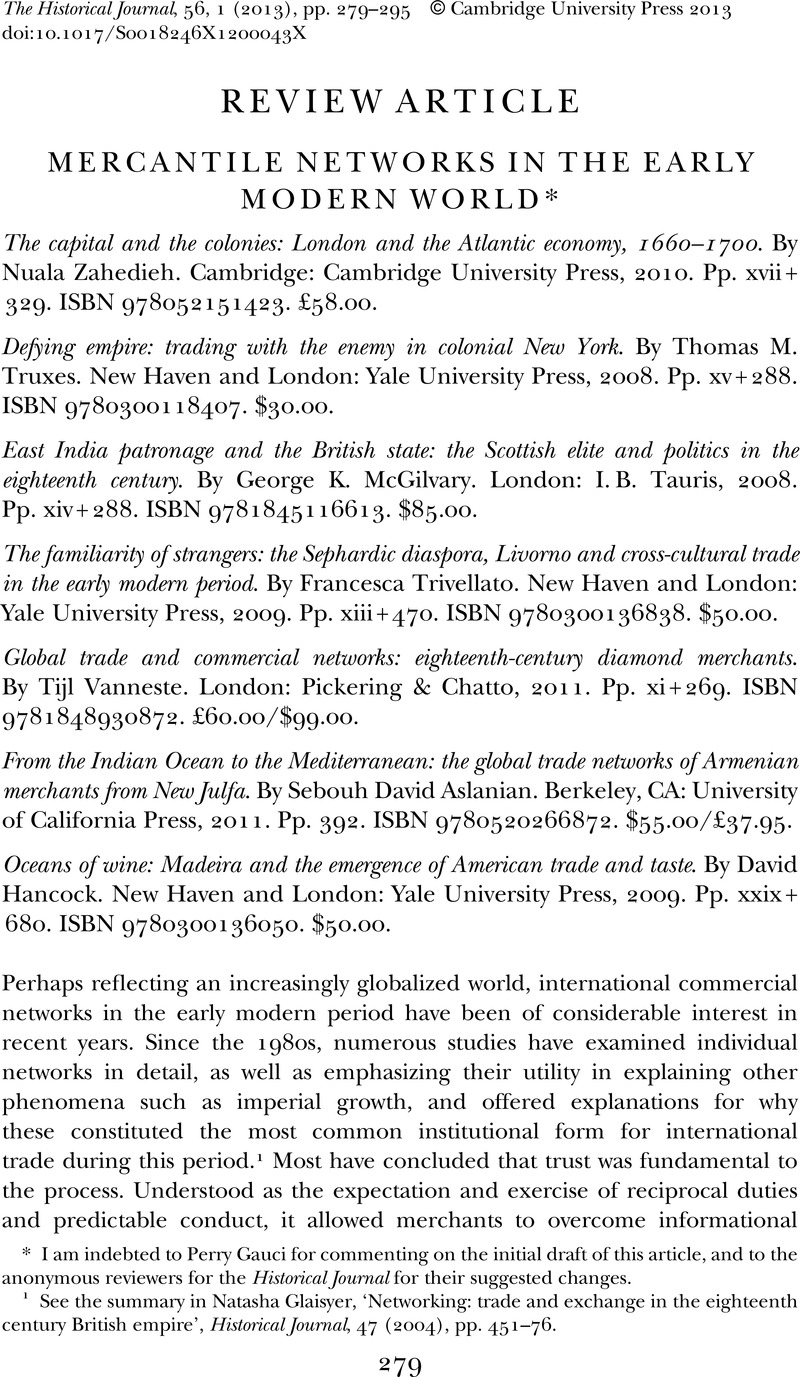Published online by Cambridge University Press: 01 February 2013

I am indebted to Perry Gauci for commenting on the initial draft of this article, and to the anonymous reviewers for the Historical Journal for their suggested changes.
1 See the summary in Glaisyer, Natasha, ‘Networking: trade and exchange in the eighteenth century British empire’, Historical Journal, 47 (2004), pp. 451–76CrossRefGoogle Scholar.
2 Hancock, David, Citizens of the world: London merchants and the integration of the British Atlantic community, 1735–1785 (Cambridge, 1995)Google Scholar; Yogev, Gedalia, Diamonds and coral: Anglo-Dutch Jews and eighteenth-century trade (Leicester, 1978)Google Scholar.
3 Gauci, Perry, The politics of trade: the overseas merchant in state and society, 1660–1720 (Oxford, 2001)CrossRefGoogle Scholar.
4 Murdoch, Steve, Network north: Scottish kin, commercial and covert association in northern Europe, 1603–1746 (Leiden, 2006)Google Scholar.
5 Mathias, Peter, The brewing industry in England, 1700–1830 (Cambridge, 1959)Google Scholar; Cullen, Louis, The brandy trade under the Ancien Régime: regional specialisation in the Charente (Cambridge, 1998)Google Scholar; Duguid, Paul, ‘Networks and knowledge: the beginning and end of the port commodity chain, 1703–1860’, Business History Review, 79 (2005), pp. 109–18CrossRefGoogle Scholar; Bennett, Norman E., ‘The Golden Age of the port wine system, 1781–1807’, International History Review, 12 (1990), pp. 221–48CrossRefGoogle Scholar.